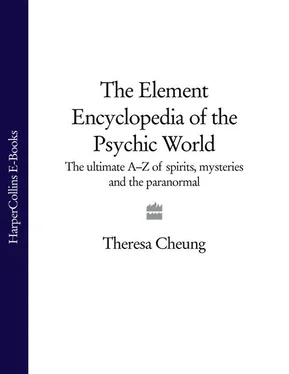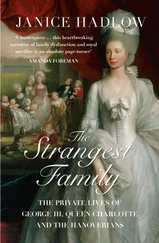A method of divinationin which significance is ascribed to chance remarks. It dates back to ancient Greece and Rome, where omensof good and evil were established from chance remarks spoken without premeditation.
Also known as cloud dissolving, this is the psychokinetic ability to make clouds disappear by thought or will. Sceptics argue that clouds naturally appear and disappear every 15 to 20 minutes on their own, and tests on cloud busting have never been conclusive. However, various cultures around the world perform weather control ceremonies in the firm belief that humans, being connected to all things living, can influence the weather. Whether or not this is possible remains unknown.
Cloud reading is one of the oldest forms of divinationand was commonly practised by the Druidsand the Celts. By looking at cloud formations and how the clouds moved, fortunes could be determined.
Odd-looking clouds, and clouds that take on the distinct shape of something or someone, have intrigued and fascinated people through the ages. Clouds, mist and vapour are basic elements in human mystery, and many reports of apparitionsbegin and end with curiously shaped clouds.
From 1762 to 1764 in Cock Lane, London, so-called poltergeistactivity both terrified and fascinated onlookers. The story was written down by Andrew Lang and published in 1894 with the title Cock Lane and Common Sense.
It all began in 1760 when a stockbroker, Mr Kent, rented a house in Cock Lane from Mr Parsons, a parish clerk. At the time, a Miss Fanny was Kent’s housekeeper; the two fell in love and decided to make wills naming each other as beneficiaries. Not long after, Kent and Parsons had a disagreement over money. Mr Kent moved out of the house and began legal proceedings against Parsons. In the meantime, Fanny died of smallpox, and Parsons seized upon the chance to get his revenge on Kent. He concocted a story whereby Mr Kent had murdered Fanny for the inheritance, and in 1762 Parsons began to claim that Fanny was haunting the house. He alleged that Fanny had told his 12-year-old daughter, Elizabeth, that she had been poisoned by Kent. Parsons invited a committee of 20 or more men to his house to witness Fanny’s ghost possessing his young daughter. Elizabeth, apparently under the influence of Fanny, declared once again that she had been poisoned and that the only way she could rest would be if Kent were hanged.
Before long Cock Lane was full of the curious - Parsons even took to charging a fee for people to enter the house and listen to the ghost knocking. There were, however, many who were suspicious of the ghost tale, and their suspicions were confirmed when the ghost failed to appear as promised when Kent was brought to Fanny’s vault. Parsons tried to argue that the ghost did not appear because Kent had moved Fanny’s coffin, but Mr Kent countered this by taking several witnesses to the coffin, which he had opened to reveal Fanny’s body. Afterwards, Kent indicted Parsons and his daughter for fraud. Parsons was found guilty and sentenced to two years in prison.
See Synchronicity.
A cold reading is a psychicreading made for someone the psychic has never met. This type of reading is different from one in which there may have been previous contact or one in which the psychic has a certain amount of information already about the person being read. Typically, people visit their favourite psychics on a regular basis, and when this happens the readings are no longer cold, as the psychic becomes familiar with aspects of a client’s personality and life.
The collective or universal unconscious was a concept developed by psychiatrist Carl Jung(1875-1961) and later supported by Joseph Campbell in his study of world mythology. It refers to the part of the mind that is ‘inborn’ or determined by heredity and that shares memories, mental patterns and images with all humans. Prior to Jung, the prevailing view of the unconscious had been that of Sigmund Freud, who believed that it was the product of repressed childhood traumas.
Jung affirmed that a personal unconsciousof repressed or forgotten material existed but that the collective unconscious consisted of patterns of instinctual behaviour, called archetypes. The word archetype comes from the Greek arche, meaning ‘first’, and type, meaning ‘imprint’ or ‘pattern’. Psychological archetypes are thus patterns that form the basic blueprint for human personality. For Jung archetypes pre-exist in the collective unconscious of humanity and determine how we both perceive and behave. These patterns are inborn - part of our inheritance and psychological life as human beings. They are both inside us and outside us. We can meet them by turning inwards to our dreamsor imagination, and by turning outwards to our myths, legends, literature and religions.
Psychic or fraud?
A cold reading can be a good way to see if a psychic really can pick up relevant information that can help you. Be aware, though, that some psychics are very skilled at getting information about you without you even knowing it. They may be experts in observation, using every movement of your body and every expression on your face to verify information they give you; even a slight hesitation on your part can speak volumes. They may repeat information that you unconsciously already gave. Another technique is to make general statements or questions that could apply to anyone and to watch your reaction to pick up clues about what you are looking for in the reading. Be sure to recognize this approach - it is not how genuine psychics work.
COLLEGE of PSYCHIC STUDIES
Founded in 1884 as the London Spiritualist Alliance, the college changed its name in 1955 to the College of Psychic Science, and in 1970 it became the College of Psychic Studies. The college is now a non-profit organization, based in South Kensington, London, which explores psychicphenomena and other spiritual matters such as healing. The college seeks ‘to promote spiritual values and a greater understanding of the wider areas of human consciousness, welcoming the truths of all spiritual traditions and, equally, each and every individual.’ An extensive library, materials and courses in psychic development, spiritual healing and mediumshipare offered to the general public and to psychical researchers. The college also has a website where useful information can be accessed: www.college-ofpsychicstudies.co.uk.
Because colours are a dynamic part of our lives, affecting us in many ways (see Colours), some believe that colour can be used as a tool for divinationand guidance.
All about colours
The following provides some typically accepted attributes of colour that can help us gain insight into people no matter how they present themselves.
Red: Colour of strength and power, linked to sexual energy; can indicate an active person with lots of energy; darker shades can reflect strong emotions, even anger; can also indicate a creative person.
 Orange: The colour of fun, creativity and generosity (they may be too generous); a bright and optimistic person.
Orange: The colour of fun, creativity and generosity (they may be too generous); a bright and optimistic person.
Читать дальше

 Orange: The colour of fun, creativity and generosity (they may be too generous); a bright and optimistic person.
Orange: The colour of fun, creativity and generosity (they may be too generous); a bright and optimistic person.
![Theresa Cheung - The Dream Dictionary from A to Z [Revised edition] - The Ultimate A–Z to Interpret the Secrets of Your Dreams](/books/692092/theresa-cheung-the-dream-dictionary-from-a-to-z-r-thumb.webp)









